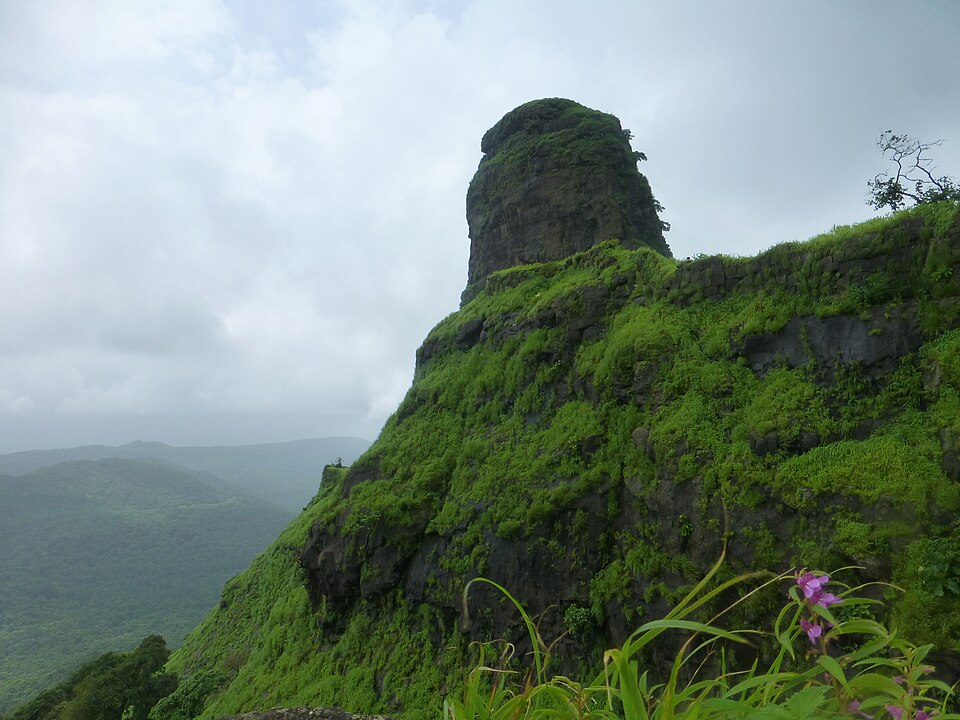Perched majestically amidst the lush Western Ghats, Karnala Fort stands as a testament to history, natural splendor, and trekking adventures. This enchanting fort, nestled within the Karnala Bird Sanctuary in Maharashtra, has become a cherished destination for trekkers, nature enthusiasts, and those seeking a day of adventure amidst the tranquil embrace of Mother Nature.
History of Karnala Fort:
The history of Karnala Fort is shrouded in time, with records dating back to the 12th century when it was under the rule of the Yadav dynasty. Over the centuries, it saw a succession of rulers, including the Mughals and the Marathas. Its strategic location along trade routes made it an essential outpost.
Architecture and Structures:
The architectural charm of Karnala Fort lies in its simplicity. Constructed primarily of basalt rock, the fort comprises two distinct peaks, the larger one housing the main fortifications and the smaller one featuring a unique pinnacle. Ruins of bastions, a water cistern, and remnants of structures offer a glimpse into its past glory.
Cultural and Historical Significance:
Beyond its historical value, Karnala Fort is a serene retreat steeped in spirituality. The fort’s entrance features a Ganesh temple, a nod to the ancient traditions and beliefs of the region. The journey to the fort, often through thick forests and diverse birdlife, adds to its allure.
Visitor Information:
Reaching Karnala Fort is a delightful drive from Mumbai or Pune, making it a perfect day trip. The fort is located within the Karnala Bird Sanctuary and is open throughout the year. Visitors need to pay a nominal entry fee to access the sanctuary.
Best Time to Visit:
The ideal time to embark on the Karnala Fort trek is during the post-monsoon and winter months, from October to March. The weather is pleasant, and the lush greenery comes alive with flora and fauna.
Nearby Attractions:
The Karnala Bird Sanctuary offers numerous opportunities for birdwatching and nature trails. The nearby Prabalgad Fort and Kalavantin Durg are also popular trekking destinations for adventure enthusiasts.
FAQs (Frequently Asked Questions):
1. How do I reach Karnala Fort from Mumbai?
Karnala Fort is approximately a 50 km drive from Mumbai via the Mumbai-Goa Highway. The sanctuary entrance is well-marked.
2. Is there an entry fee for Karnala Fort and the bird sanctuary?
Yes, there is a nominal entry fee for visitors to both Karnala Fort and the Karnala Bird Sanctuary. These fees support conservation efforts.
3. Can I go trekking at Karnala Fort without a guide?
Yes, trekking Karnala Fort independently is possible, and the trail is well-marked. However, hiring a local guide is recommended for safety and to gain insights into the area’s natural and historical significance.
4. Is Karnala Fort trek suitable for beginners?
Yes, the Karnala Fort trek is considered relatively easy and is suitable for beginners. The trail offers a mix of adventure and natural beauty.
5. Are there accommodation options near Karnala Fort?
While there are limited accommodation options near Karnala Fort, many visitors opt for a day trip from nearby cities like Mumbai and Pune.
Conclusion:
Karnala Fort invites you to step into a world where history meets nature. It’s more than just a fort; it’s a journey through time and a communion with the rich biodiversity of the Western Ghats. As you trek through its lush forests, stand in awe of its historical remnants, and breathe in the pure air of the Karnala Bird Sanctuary, you are not just visiting a fort; you are embarking on an adventure that nourishes the soul and captivates the senses.
Featured Image – https://en.wikipedia.org/
